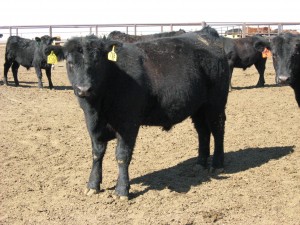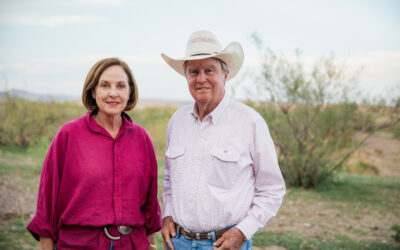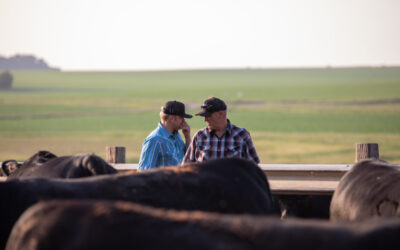
Dressing Percent: Real or Imagined?
Can you alter dressing percent in beef cattle? The answer is a resounding “dern tootin'”!!!!!

It is mostly just common old biology, but you have to put your thinking cap on to rationalize some of the factors that affect it.
A Holstein steer doesn’t bring as much money as a beef steer at the packing plant. They are going to be “back” at least $8 per cwt and today perhaps as much as $15 … why? It’s not because of carcass quality grading; in fact, Holsteins will grade quite well. The issue is yield.
Holsteins have big heads and a big gut capacity (if you ever fed one, you’d soon find out how much they can put away!). When you hang one up, and remove those things like the head, the hide and the guts, the amount that is left is less than a beef animal that has a thicker, more heavily muscled carcass and a rib compartment more suited to hosting a small party than a large convention (like the Holstein’s). So naturally, they are not going to dress, or yield, as much. A Holstein steer may dress (without the aid of beta agonists or implants) about 58-60%. An average beef steer should yield a minimum of 61.5%; but more likely 62-65%. There are exceptions, of course, in both instances.

Likewise, an older, longer fed, fatter animal is going to dress a higher percentage of carcass weight:live weight because muscle, fat, and bone will all be there in larger amounts relative to a younger animal that has not been fully developed yet. You keep adding weight to an animal during the feeding period because he’s putting on more fat; his head’s not getting any bigger, and neither are his entrails. His muscle accretion will slow down as he approaches harvest readiness, but fat will get laid on. While not as heavy as muscle, added fat adds pounds to the carcass and improves yield. Implants and beta agonists will also improve yield by adding more muscle mass and, in effect, extend the feeding period to allow that to happen.
Concomitantly, if you have a very lean, heavily muscled steer as opposed to a fat, light-muscled steer, one would expect that the leaner, heavier muscled animal will yield more (again: muscle weighs more than fat).
Management of feeding is a huge factor. An animal that has been fed a 90% concentrate ration is going to have a higher yield than one that is fed a 60% concentrate ration. Why? Because in a higher forage ration, rumen papillae, or little finger-like projections in the rumen are larger, blood flow to the gut is increased and the entrails weigh more, putting more pressure on yield.
Shrink is also a factor. If you withhold feed for 24 hours prior to slaughter, a harvest-ready steer or heifer can easily lose 40-80 lb. Their digestive tract is empty; conversely, the yield is higher. It is a fine balance between the length of haul from the feedlot to the packing plant and which weight is used when calculating dressing percent (at the feedyard or at the packing plant?). If you weigh at the feedlot and don’t shrink them first (by withholding feed and water), the shrink could be pretty large; cattle are usually “pencil shrunk” about 4% from the live weight.
Think about it: on a group of grid-sold cattle that are merchandised on the hot carcass weight, if the live weight of the steer is 1,350 lb. and he dresses 64%, his “pay weight” is 864 lb. If he dresses 61%, his pay weight is 823.5 lb., and 40.5 lb. at $1.90/ lb. is nearly $77 per head. So we can’t just shrug it off or not pay attention to it. It’s an important economic factor.
There is something to how the packing plant processes the animals, too. Invariably, there are differences between packing plants in their yield which may have a lot to do with techniques, practices at the plants and other factors outside of hauling distances. When feedlots sell cattle to packing plants, the plant usually has a “threshold yield” that the cattle must meet to draw premiums. Over time, these thresholds have been raised, making it more difficult to attain.
It’s not a guessing game, but yield/dressing percent can be altered by many different practices. And it can make a big difference on the bottom line. Dern tootin’!
I’ve been on the road here lately, and will share with you next time some great ranch visits to the great state of Arkansas!
You may also like
An Unforgiving Land
What makes a ranch sustainable? To Jon, it’s simple: the same family, ranching on the same land, for the last 140 years. The Means family never could have done that without sustainability. Responsible usage of water, caring for the land and its wildlife, and destocking their herd while the land recovers from drought.
System Over Scale
For Dallas Knobloch, it’s not about being the biggest feedyard—it’s about building a high-quality system that works. Today, with Tory’s wife Sadie and daughter Ivy, the Knobloch family owns and operates 4K Cattle. They feed 2,500 cattle at eight locations within 10 miles of home, manage 1,000 acres of crops and run a 125-head cow herd, all near Hills, Minn.
Working for Premiums
The commercial Angus rancher from Collyer, Kansas, came back for daily homework in 1999 after a year at college. For 25 years now, he’s studied all the ways to grow his family’s W6 Cattle cow-calf herd with Angus at the base. Guided by data, Walt worked to improve the herd from zero Primes to averaging 60 percent. Learning what drives premiums prompted improvement.



